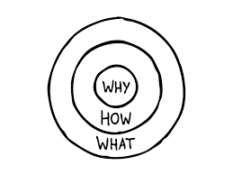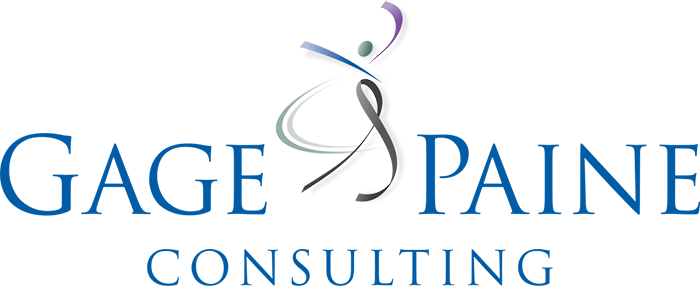Why, How, What?

Simon Sinek did his Tedx Talk about The Golden Circle in 2009. He wrote the book, he coined the term, I always give him credit. I think it’s worth listening to. So here’s the link: https://www.ted.com/talks/simon_sinek_how_great_leaders_inspire_action?language=en
I came to understand a similar idea through my own experience which I’ll explain in a moment. But there’s also some confusion here. His title is “How great leaders inspire action”, but often in his talk, it sounds more like marketing than leadership. Jason Teunissen wrote an article called “3 Things wrong with Simon Sinek’s Golden Circle” about his issues with it as a guide to marketing. https://uxplanet.org/3-things-wrong-with-simon-sineks-golden-circle-f262fed6ce3f
I know only a minimal amount about marketing, but I agree that the Golden Circle is not a great tool for marketing. However, I do find the concept useful as a leadership tool.
Golden Circle Leadership
Here’s the way the idea works for me as a leader. As I’ve mentioned in Sunday’s post and this week’s newsletter introduction, I learned that my job as a leader of a complex organization was to have a deep understanding of our purpose, our answer to the Why question. Then I had to keep that answer front and center of our decision-making processes, our evaluation and assessment of our work, and our hiring and performance review. In my work in higher education, the Why was always the same no matter what title I held or what type or size of university I worked at. The Why of our work was the student, the student experience, opportunities, learning. All the time, in everything we did.
Yes, I still had important responsibilities to and for staff. Yes, a large complex university does more than teach students. But, throughout my career the purpose at the core, the Why has been about students.
It was also my job to make sure people understood our How. This is where we lived our values -How we did our work, no matter what our individual tasks might be. We worked collaboratively – across our departments, with campus partners, and with students. Our How was ethical. We always valued people over process, while understanding that process does matter. This means the challenge is to find ways to say yes to students, to wild ideas, and to creative possibilities while honoring our practices and procedures. (Or working to change them when warranted.) Our How included orientation to our division, training on items that were important – processes, professional development, for example, and finding the necessary resources as best we could.
This meant our What could be handled where it should be – in the departments, at front desks, and by individual staff members. And then I didn’t worry about the student experience because more than 400 people knew that it mattered, understood how to do their work, and had the tools and training to do the work.
Purpose
There are many ways to understand your organizational purpose and it’s worth spending some time thinking about your purpose. If you want something to spur your thinking about purpose, I suggest It’s Not What You Sell, It’s What You Stand For, by Roy M. Spence Jr. with Haley Rushing. It’s written from a business/marketing perspective, so not everything applies. But I found it stimulated my thinking about this idea and worth exploring if you want to think more about organizational purpose.
So, what’s your organization’s purpose? What is your Why, your How, your What?
*Spence, Jr., R. M. with Rushing, H., (2009) It’s Not What You Sell, It’s What You Stand For, Penguin Group: New York.
